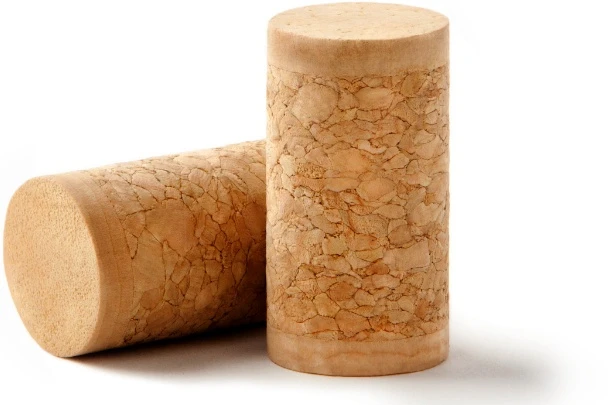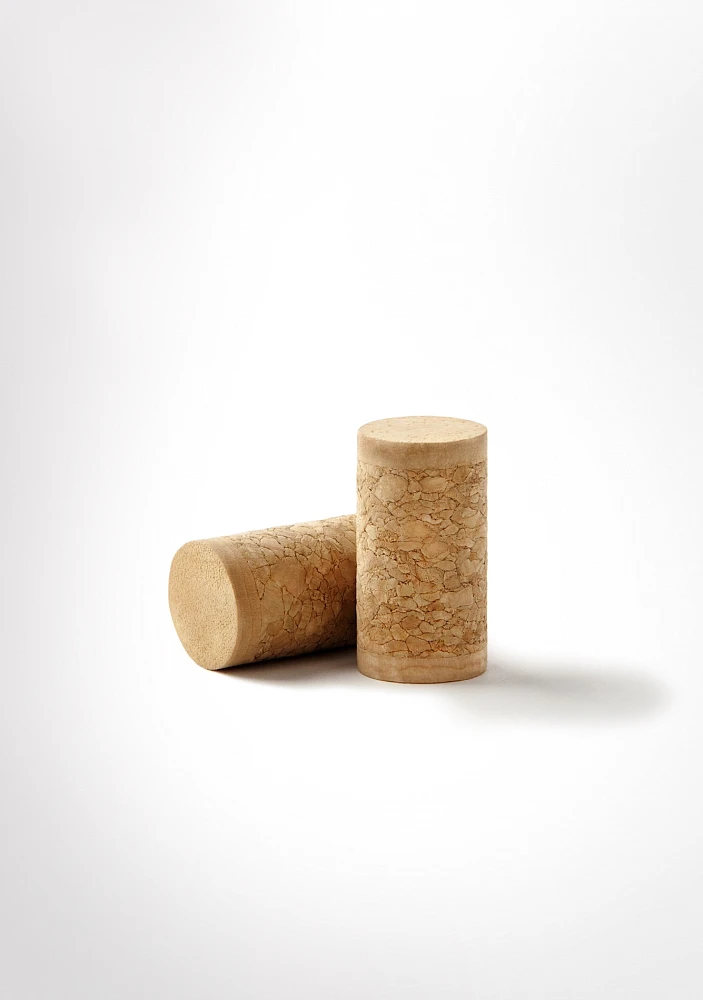- Portfolio
- Product
Portfolio
BackTwin Top® The perfect match for early consumption wines



Ideal for fruity wines
Excellent performance and sustainability for high-speed bottling lines.
Based on the technology used in champagne stoppers, comprising a body of agglomerated cork and a disc of natural cork at each end, it is ideal for fruity wines and recommended for wines not intended for long bottle aging.
Cork Properties
| Tests | Characteristics | Specifications |
|---|---|---|
| Physical-Mechanical | Length (l) | l ± 1.0 mm |
| Diameter (d) | d ± 0.4 mm | |
| Ovalisation | ≤ 0.3 mm | |
| Moisture | 4% - 9% | |
| Specific weight | 250 - 330 kg/m3 | |
| Extraction force | 20 - 40 daN | |
| Chemical | Peroxide content | ≤ 0.1 mg/stopper |
| Dust content | ≤ 3mg/cork | |
| OTR (Oxygen Transfer Rate) | 12 months | 1,68 mg/stopper |
| 24 months | 1,73 mg/stopper | |
| 36 months | 1,78 mg/stopper | |
| CO2 | Footprint | -37.41 g/stopper |
- 44 x 23,5 mm
- 39 x 23,5 mm
- Amorim can calculate the required cork diameter by studying the internal profile of the bottleneck, the characteristics of the wine and the corking conditions.
- Order your cork stoppers for immediate use. These cork stoppers should be used within six months of the date of manufacture if the storage conditions are respected.
- Store the cork stoppers in their original packages, in a well-ventilated room with controlled temperature between 15oC and 25oC and 50% to 70% humidity.
- Do not leave boxes and/or bags open with surplus cork stoppers.
- Ensure any dust its removed before corking.
- Ensure the cork is compressed smoothly, to a diameter no less than 15,5 mm.
- Ensure insertion of the cork is a quick as possible.
- For standard bottlenecks, the cork should be inserted to 1 mm below the top of the neck.
- Minimise moisture on the inside of the bottleneck.
- Headspace should be at least 15 mm at 20oC.
- Don’t leave the cork stoppers in the feeder as to avoid dust.
- Always use stoppers with a surface treatment suitable for the type of beverage, bottling process and selected bottle.
- A vacuum must be created in order to prevent internal pressures.
- Maintain the corker jaws free of nicks and signs of wear.
- Ensure proper alignment of plunger and location ring.
- Ensure corking machine operates smoothly, especially during compression.
- Clean all cork-handling surfaces regularly with chlorine-free products.
- Ensure the equipment is suited to the cork and bottle used.
- After bottling., the bottles should be kept in an upright position for at least 10 minutes.
- Ideal bottle storage conditions are 12o-18oC at 50-70% humidity.
- Keep the wine cellar free of insects.
- Bottles should be transported in an upright position.
- The product must not be stored in a location exposed to sunlight, heated environment and in direct contact with the ground.
All Amorim Cork, S.A. products comply with existing regulations and legislation (European and FDA - Food and Drug Administration) for products in contact with food.